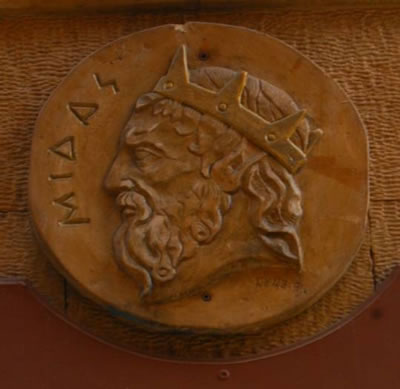In today’s entry for her recurring guest blog, titled CliffNotes, Jane Remer leapfrogs from my most recent blog entry, to three big points. I would also like to point you to a very thoughtful post responding to that very same blog, by my friend Carol Fineberg: Click here to read Carol Fineberg’s comments on my most recent entry. RK
The Myth of Arts and School Reform, Redux
Richard Kessler’s strong June 24 blog entry (Arts Education Should Align with School Reform. Really?) prompts additional thoughts dredged up from my encounters with this issue over the years. I will be brief:
1. Frustrated by lack of sustained recognition and support, the arts education and cultural community turn to advocacy, hoping to scratch their way into the consciousness and conscience of the general public, the policy makers (national, state and local), the money givers (public and private), and occasionally the education community.
2. Arts education advocacy tends to be opportunistic, claim-based persuasion that tries to co-opt research and every latest fad, craze, or buzz that commands public attention. It grabs at slogans that identify new waves or problems, latches on to them, and then asserts, even trumpets, the ability/capacity of the arts to help reach whatever goal that has been identified or solve whatever problem is lamented.
3. The impetus for this behavior is an honest desire to draw attention to the arts and their power to engage and enlighten us. History teaches us that this approach is flawed and needs rethinking.
Examples across the last five decades:
a. 1960s: The arts will improve our citizens’ quality of life, help us address social and financial inequities, and lead us to the Great Society. (A nice socially alert bubble that the Vietnamese War and the lack of infrastructure quickly defeated)
b. 1970s to today: Artists can change schools and get us back to basics. (Even the schools struggle to change themselves, their philosophies, structure and focus; the arts have a role to play, but are rarely strong enough to lead the process.)
c. 1980’s: The arts can reform schools. (If you read the abundant literature on school reform over the decades, it is crystal clear that one wave after another fails because of the lack of full commitment and implementation throughout the school, the lack of infrastructure and financial support, and the inability to sustain alterations in the culture of the school society. The arts, always a minor presence in the majority of schools, haven’t the power to move these mountains.)
d. 1990’s: The arts can reform teaching and learning.(The arts can influence, help shape and deepen understanding; they can add other desirable qualities to the school environment, and attract attention and often support from the community. Given their scarcity and limited time in school cultures, expectations must be modest and shaped accordingly.)
e. 2000: Standards in the arts can change the course of education nationally and locally. (Well, no, they can’t; or at least, they haven’t, yet.)
f. 2009: The arts can help us compete in a global economy. (No, neither directly or indirectly)
Can we clear our palette? Can we redirect our thinking and claiming to address the arts as education and together figure out how to assure their place in the spectrum of teaching and learning in every school?
Slogans don’t work. Hard work and collective thinking might.
Jane Remer
June 26, 2009
************************************************************************************************************
JANE REMER’S CLIFFNOTES
We are at another rocky precipice in our history that threatens the survival of the arts in our social fabric and our school systems. The timing and magnitude of the challenges have prompted me to speak out about some of the most persistent issues in the arts education field during the last forty-plus years.
My credo is simple: The arts are a moral imperative. They are fundamental to the cognitive, affective, physical, and intellectual development of all our children and youth. They belong on a par with the 3 R’s, science, and social studies in all of our elementary and secondary schools. These schools will grow to treasure good quality instruction that develops curious, informed, resilient young citizens to participate fully in a democratic society that is in constant flux.
I have chosen the title Cliff Notes for this forum. It serves as metaphor and double entendre: first, as short takes on long-standing and complicated issues, and second, as a verbal image of the perpetually perilous state of the arts as an essential part of general public education. I plan to focus on possible solutions and hope to stimulate thoughtful dialogue on-line or locally.
************************************************************************************************************
 Jane Remer has worked nationally for over forty years as an author, educator, researcher, foundation director and consultant. She was an Associate Director of the John D. Rockefeller 3rd Fund’s Arts in Education Program and has taught at Teachers College, Columbia University and New York University. Ms. Remer works directly in and with the public schools and cultural organizations, spending significant time on curriculum, instruction and collaborative action research with administrators, teachers , students and artists. She directs the Capezio/Ballet Makers Dance Foundation, and her publications include Changing Schools Through the Arts and Beyond Enrichment: Building Arts Partnerships with Schools and Your Community. She is currently writing Beyond Survival: Reflections On The Challenge to the Arts As General Education. A graduate of Oberlin College, she attended Yale Law School and earned a masters in education from Yale Graduate School.
Jane Remer has worked nationally for over forty years as an author, educator, researcher, foundation director and consultant. She was an Associate Director of the John D. Rockefeller 3rd Fund’s Arts in Education Program and has taught at Teachers College, Columbia University and New York University. Ms. Remer works directly in and with the public schools and cultural organizations, spending significant time on curriculum, instruction and collaborative action research with administrators, teachers , students and artists. She directs the Capezio/Ballet Makers Dance Foundation, and her publications include Changing Schools Through the Arts and Beyond Enrichment: Building Arts Partnerships with Schools and Your Community. She is currently writing Beyond Survival: Reflections On The Challenge to the Arts As General Education. A graduate of Oberlin College, she attended Yale Law School and earned a masters in education from Yale Graduate School.
*************************************************************************************************************




